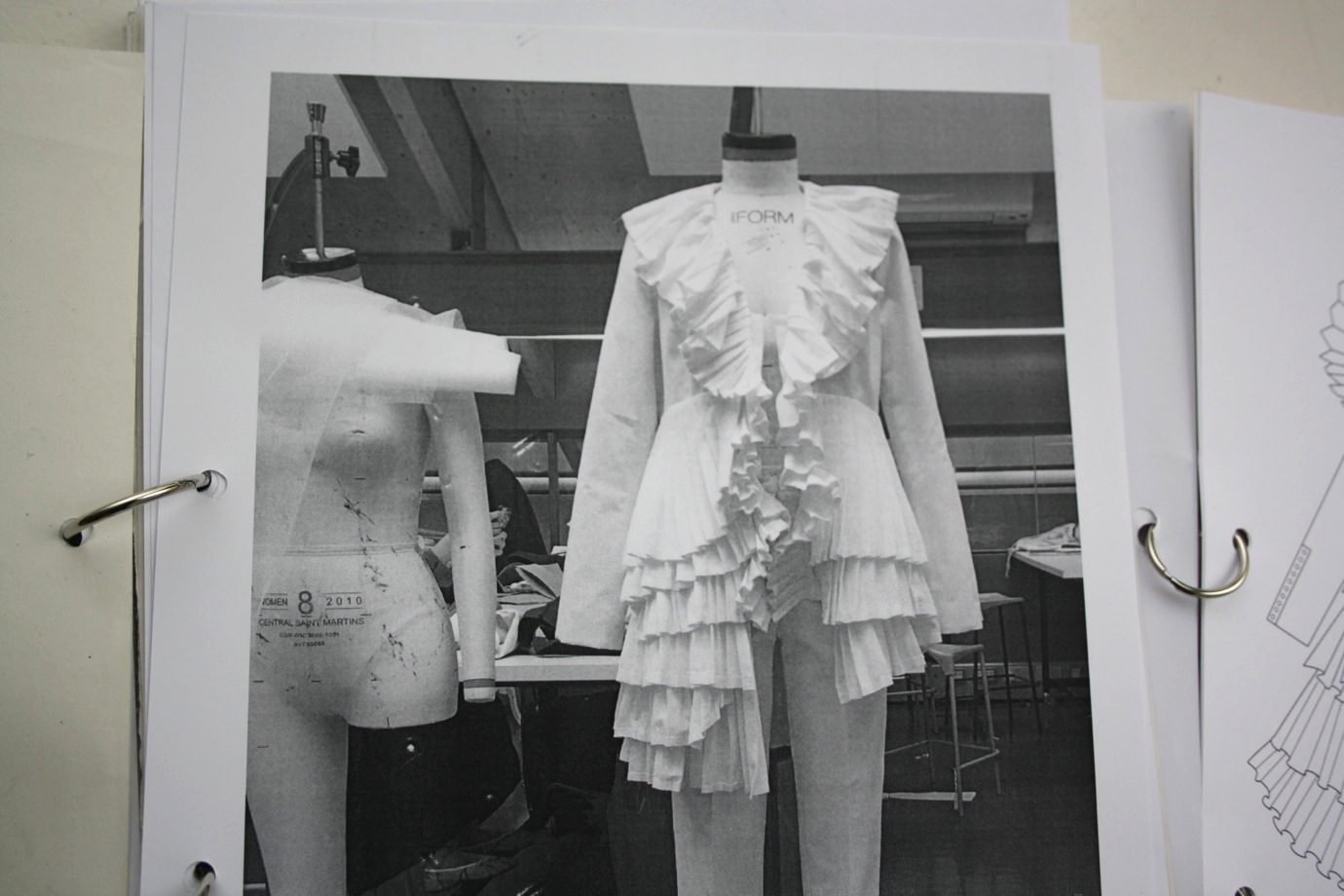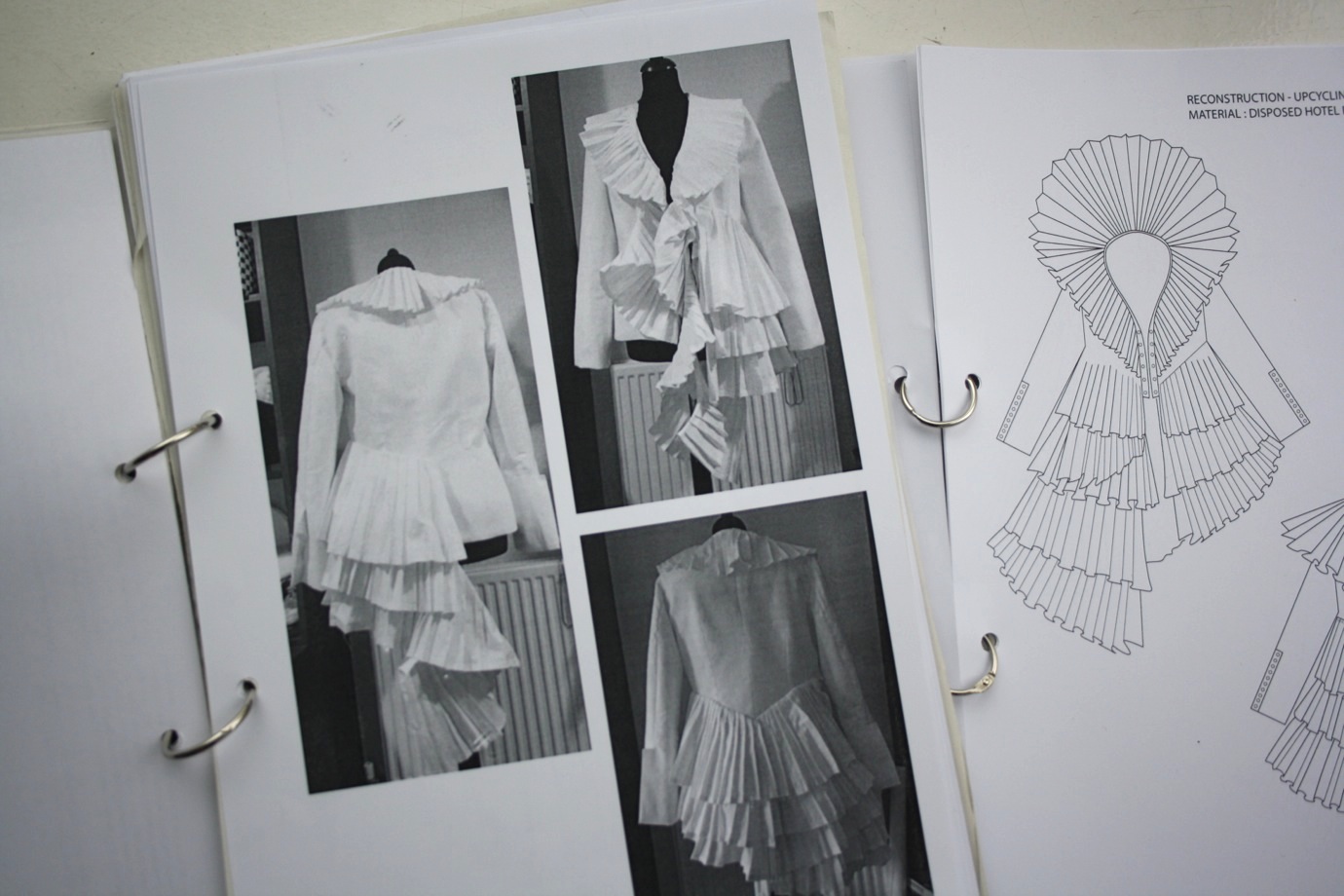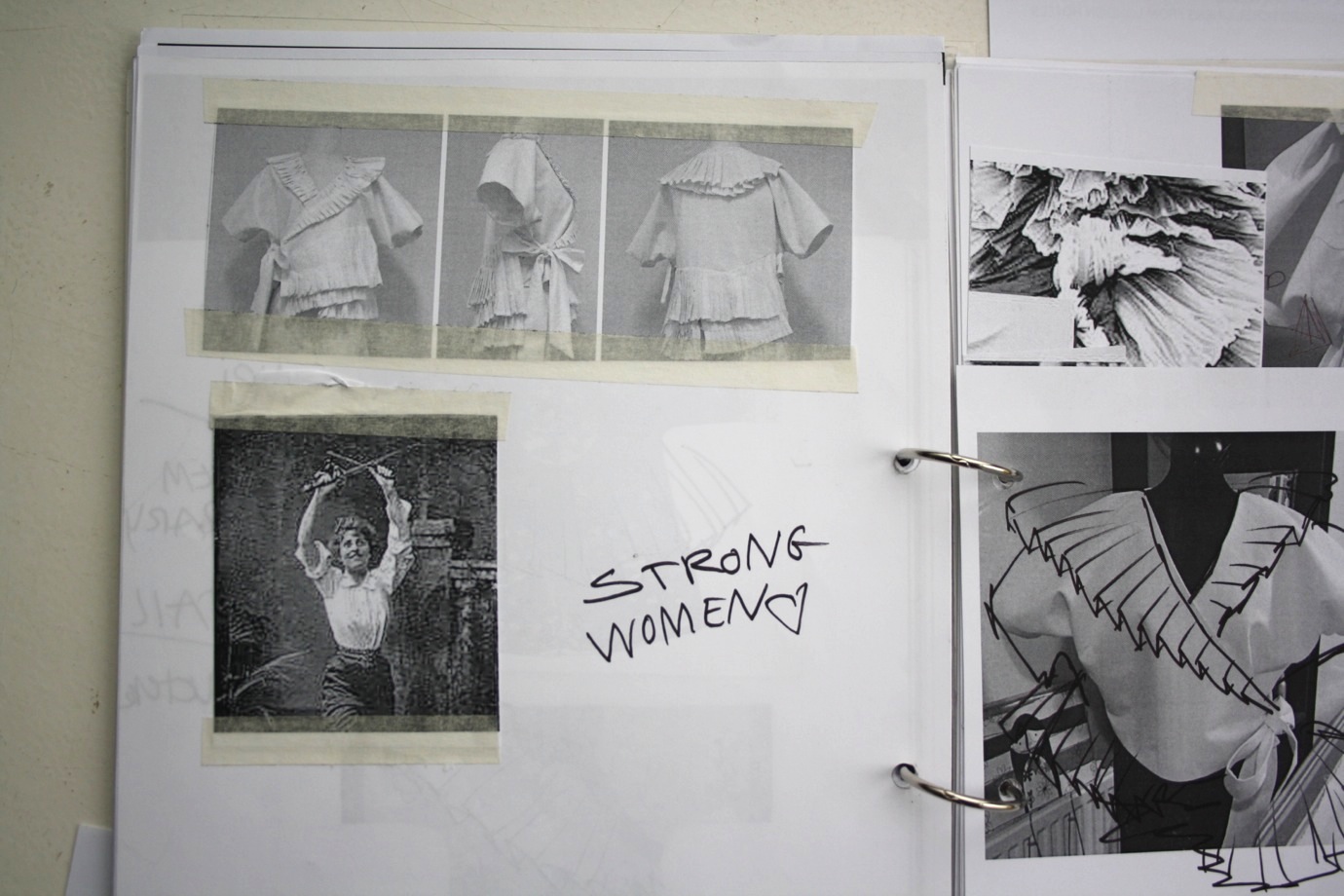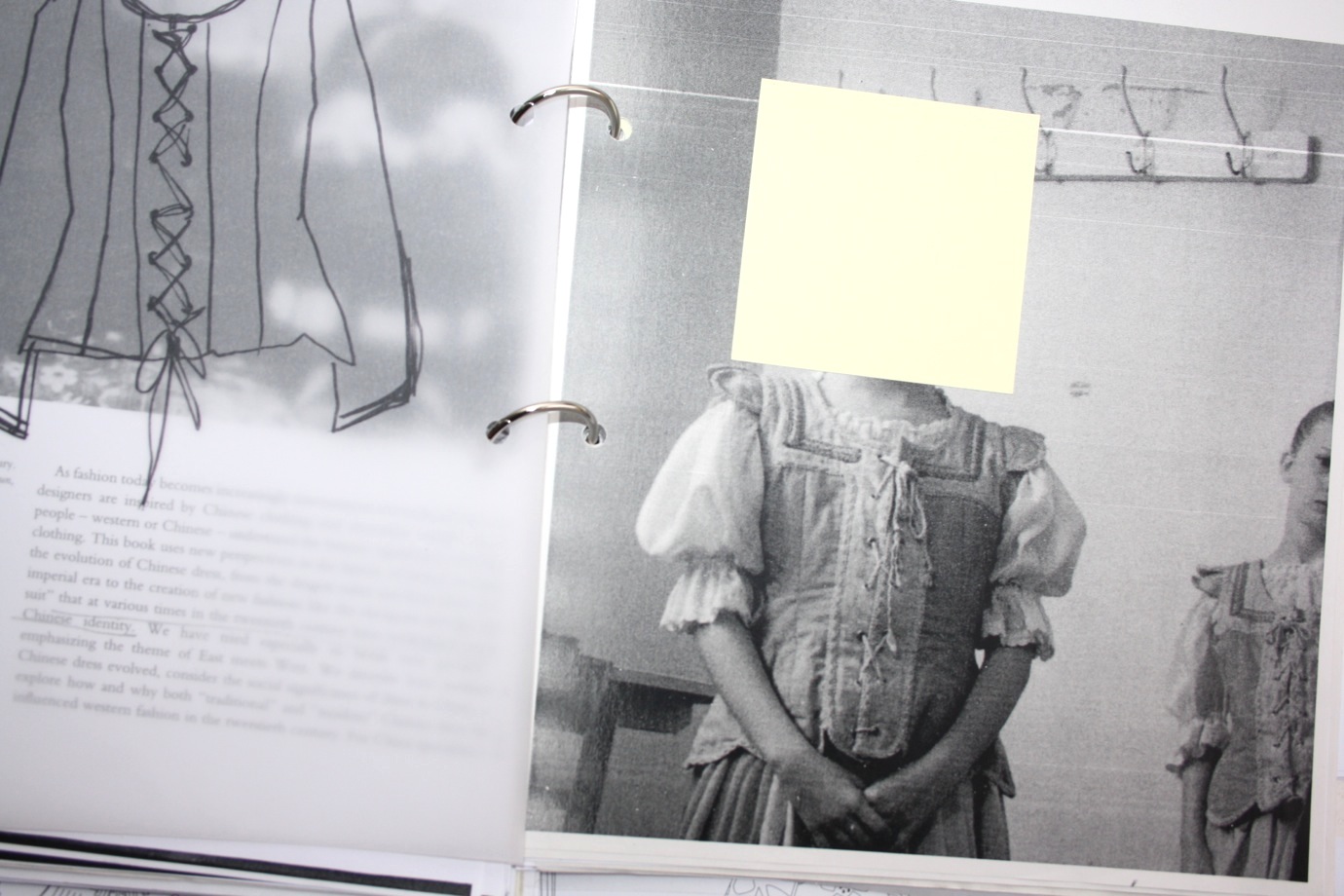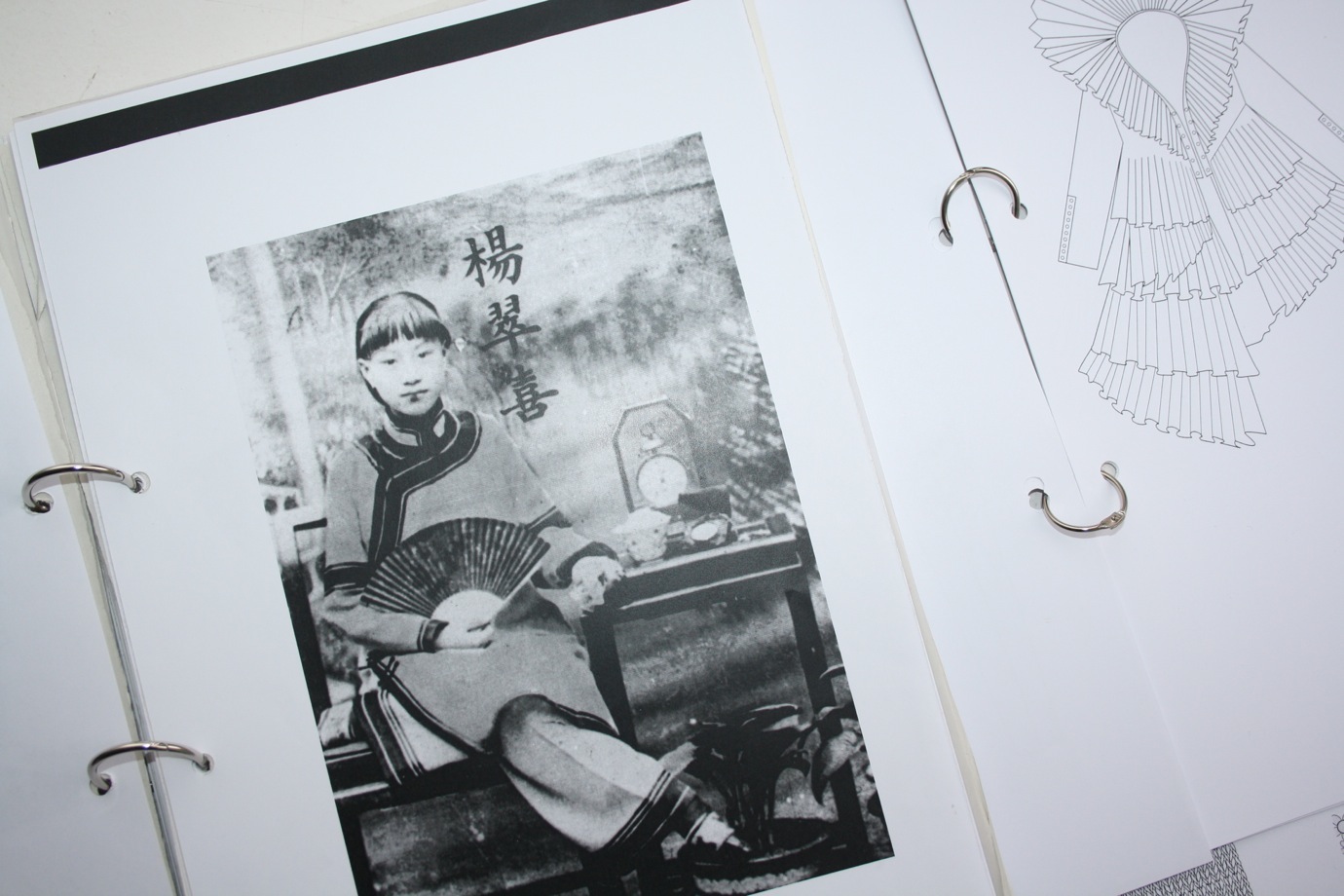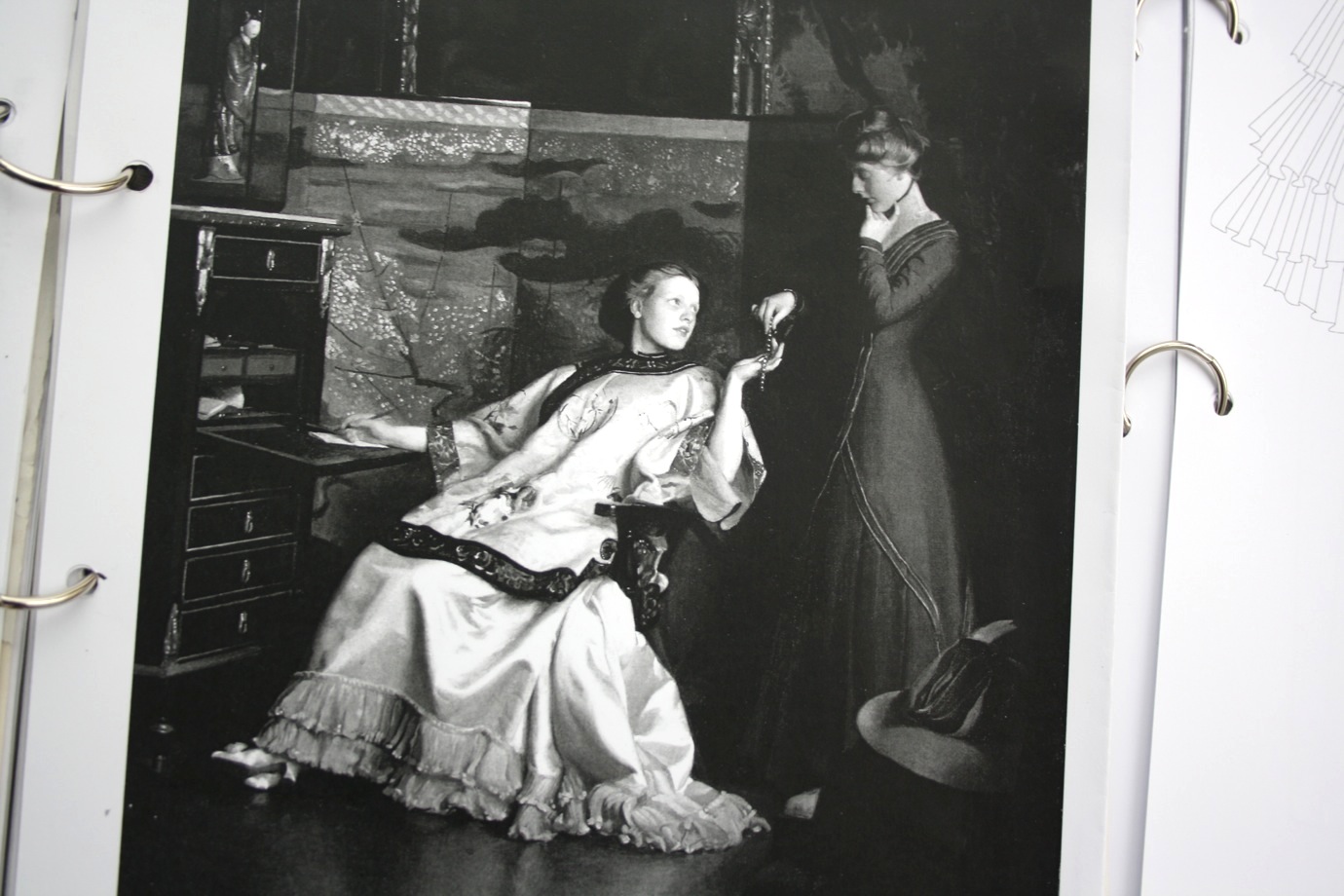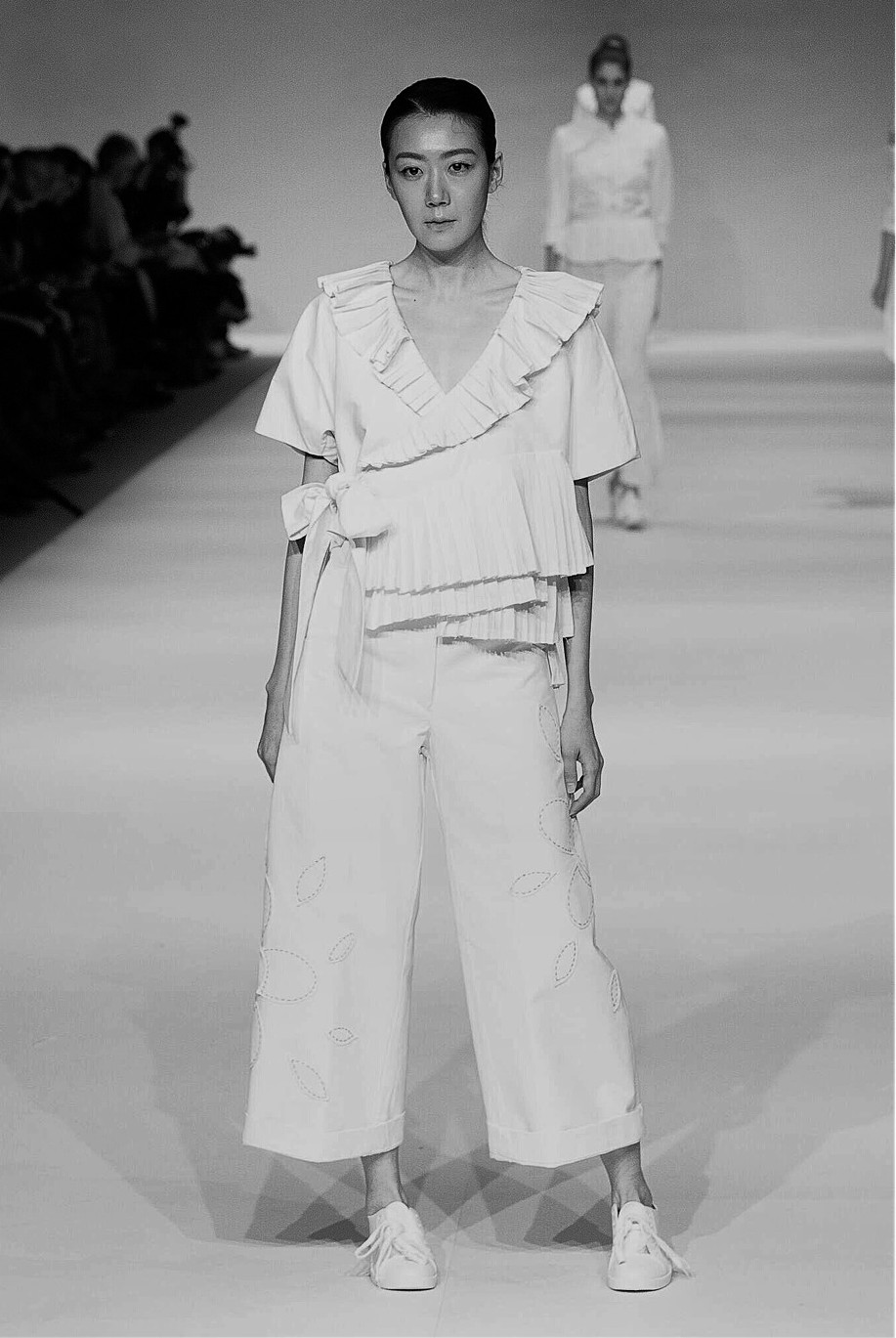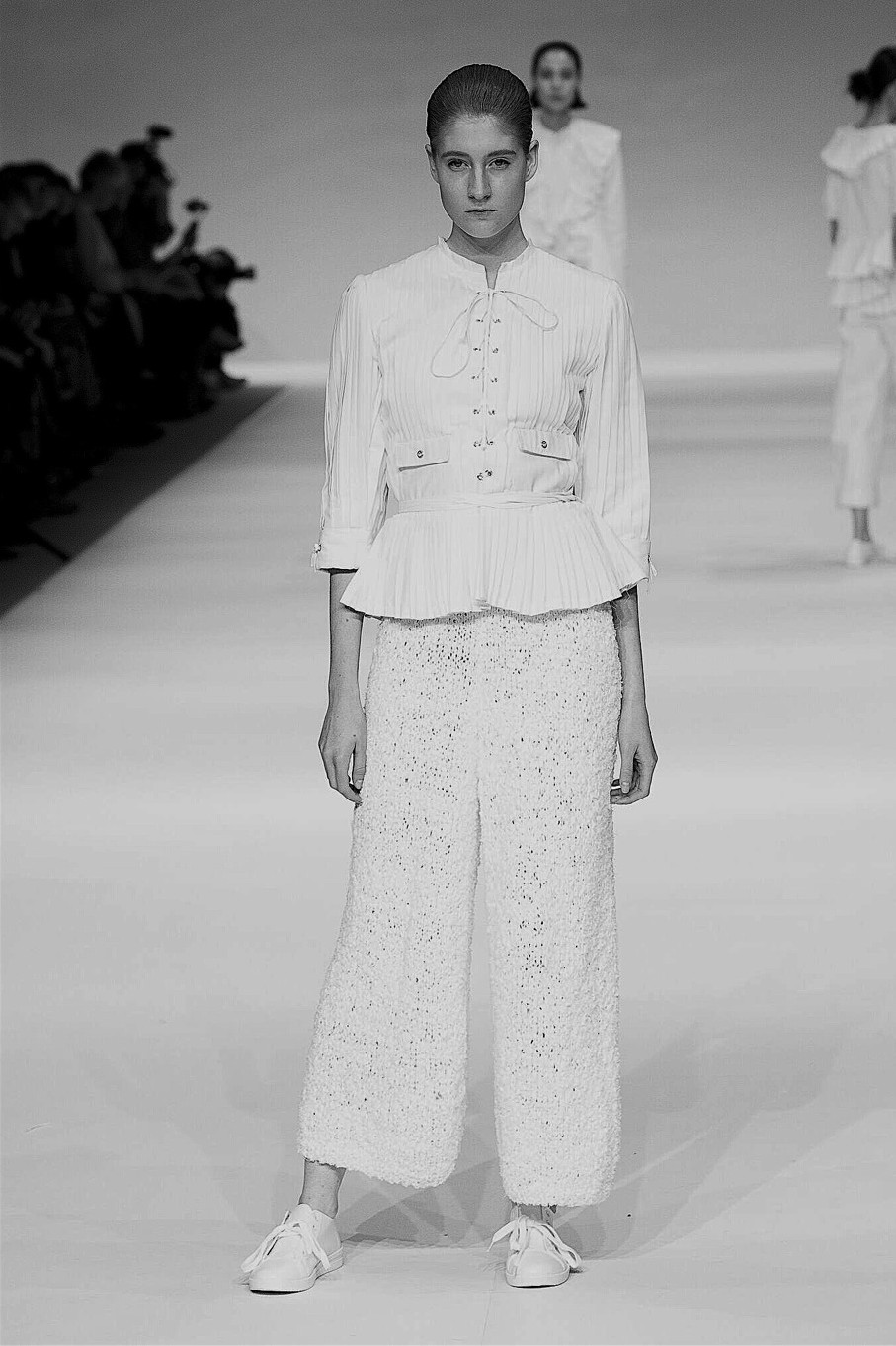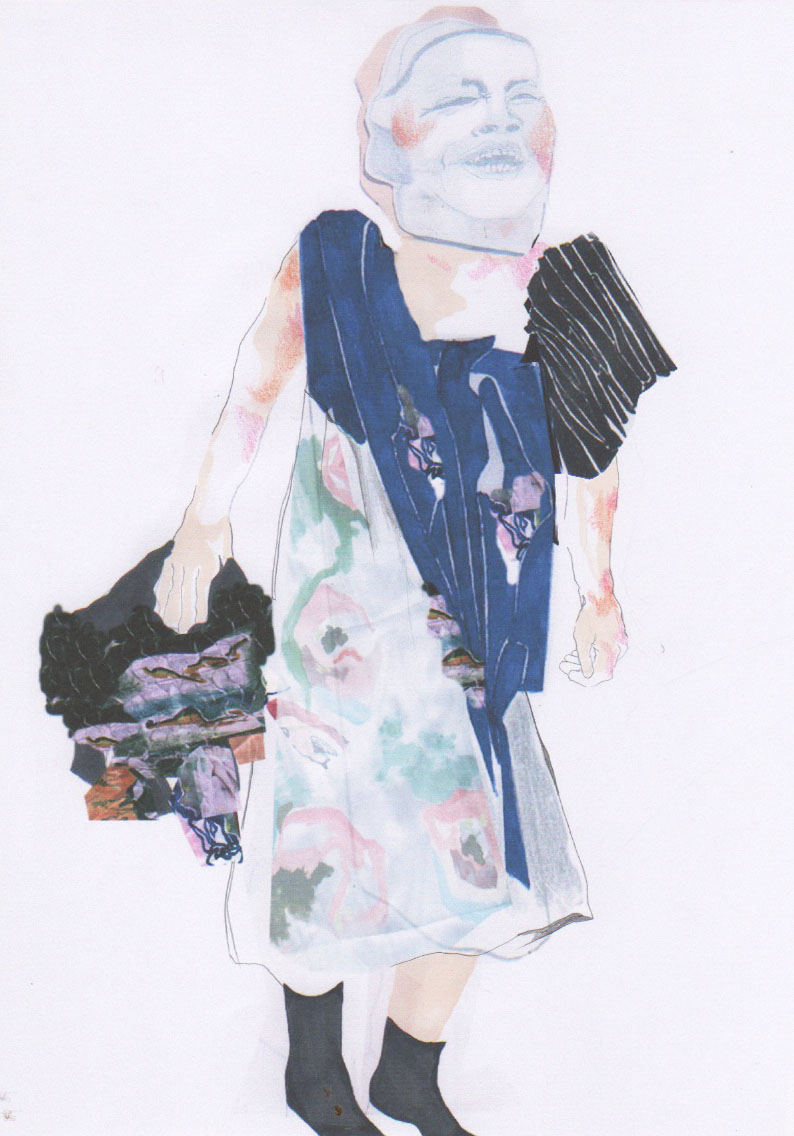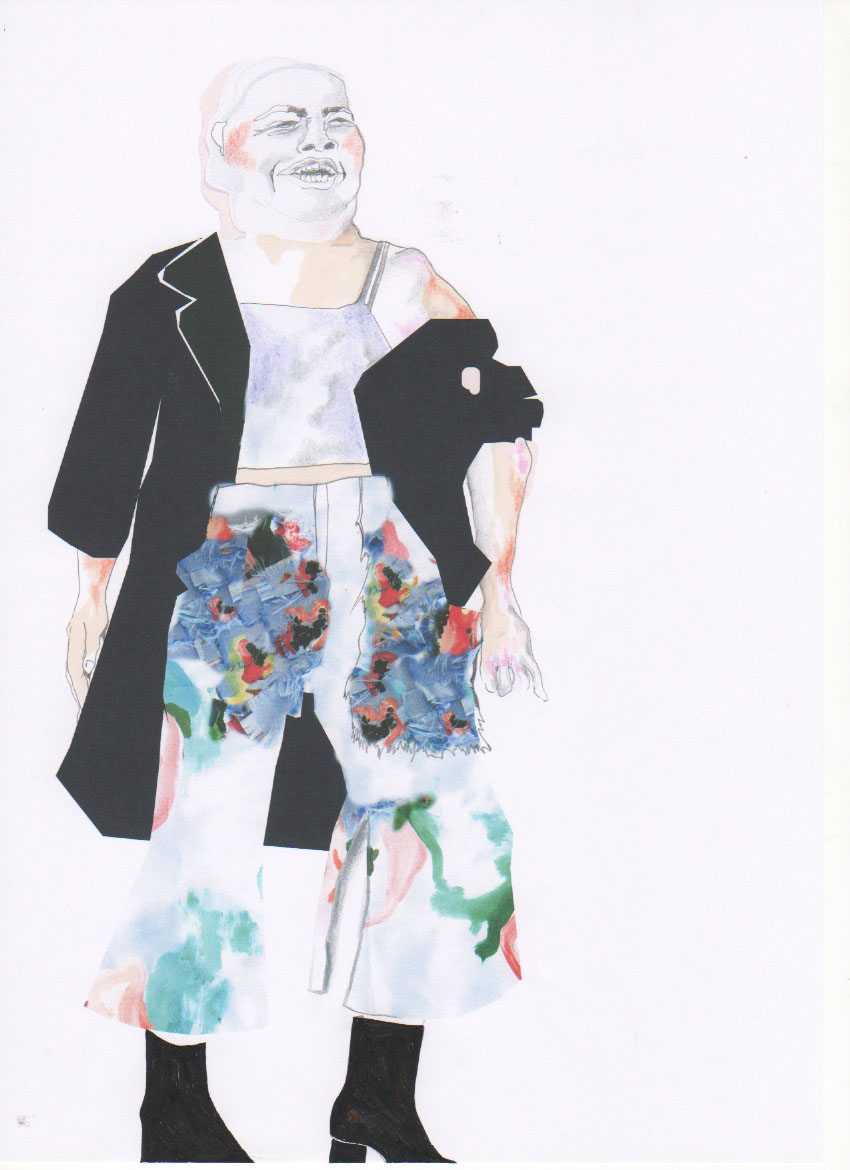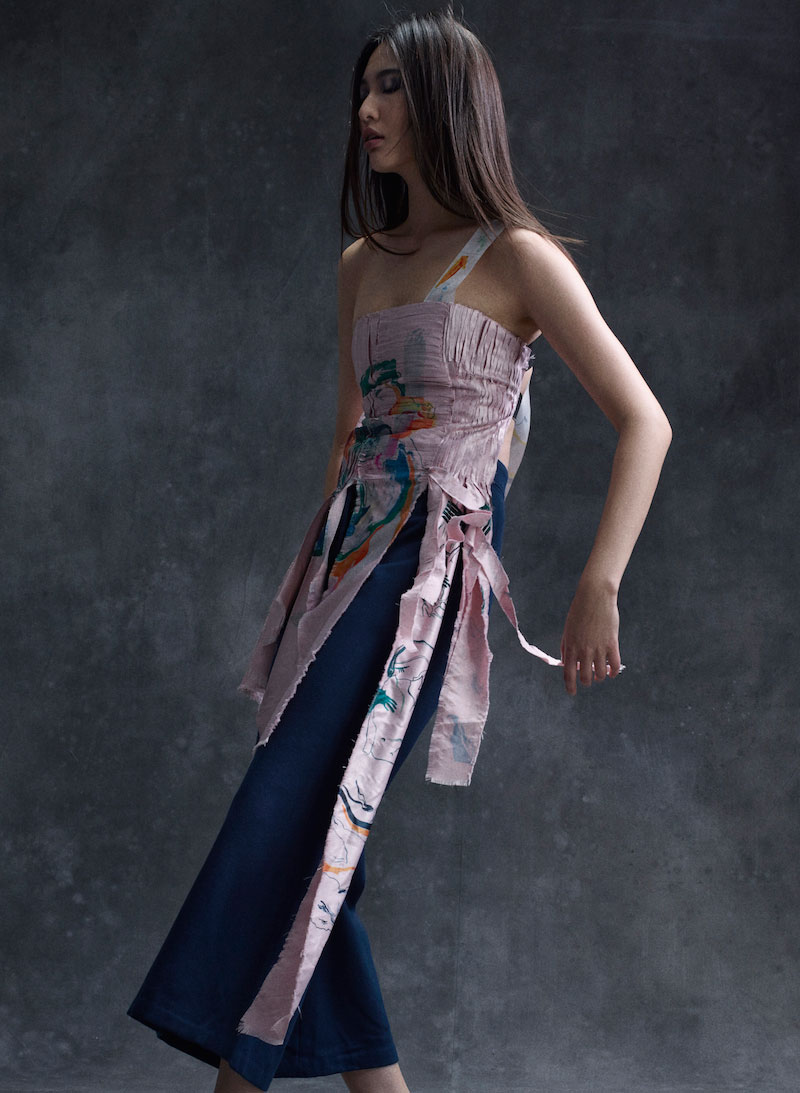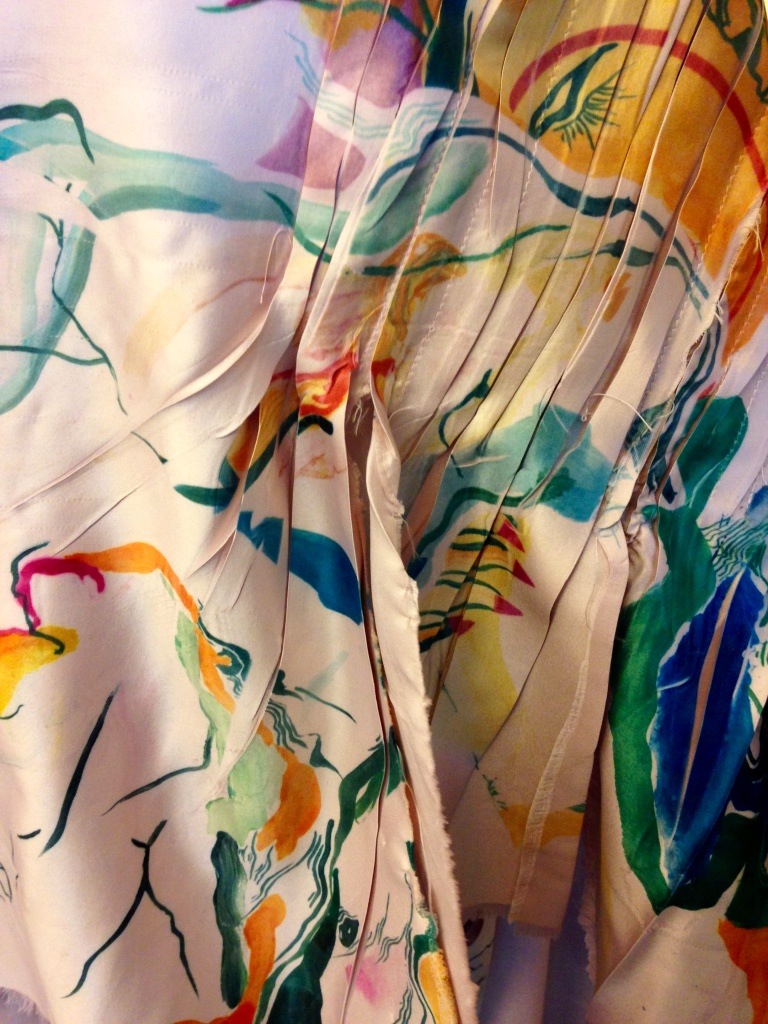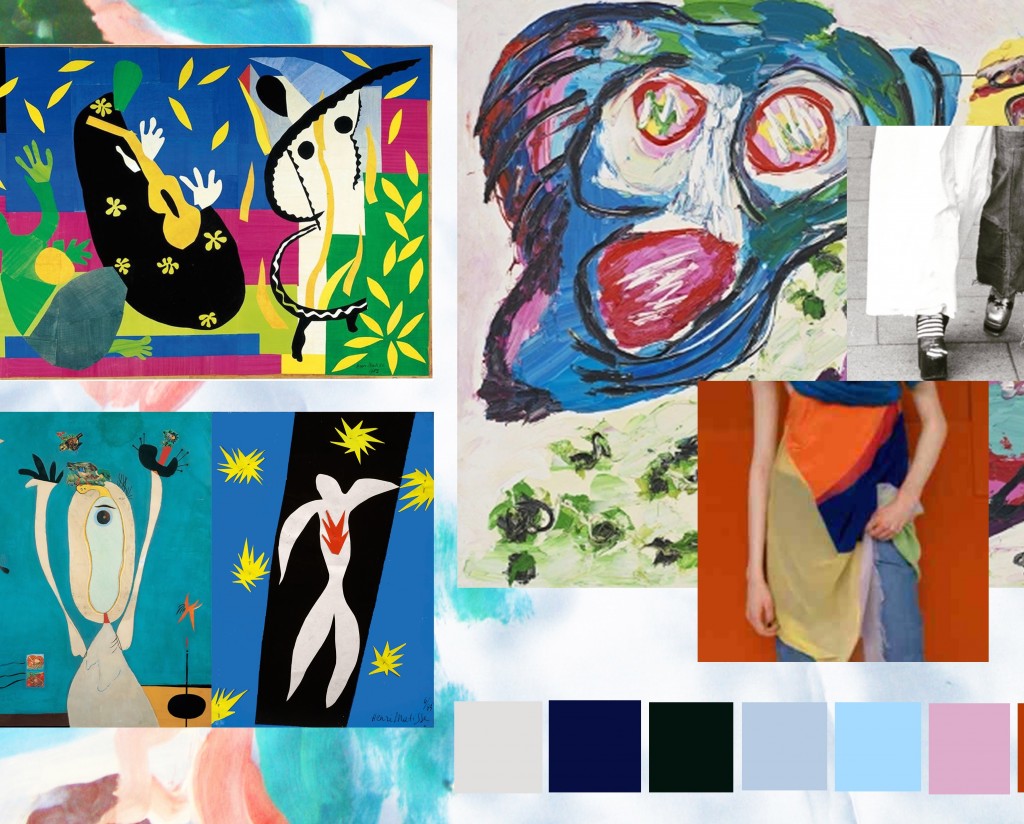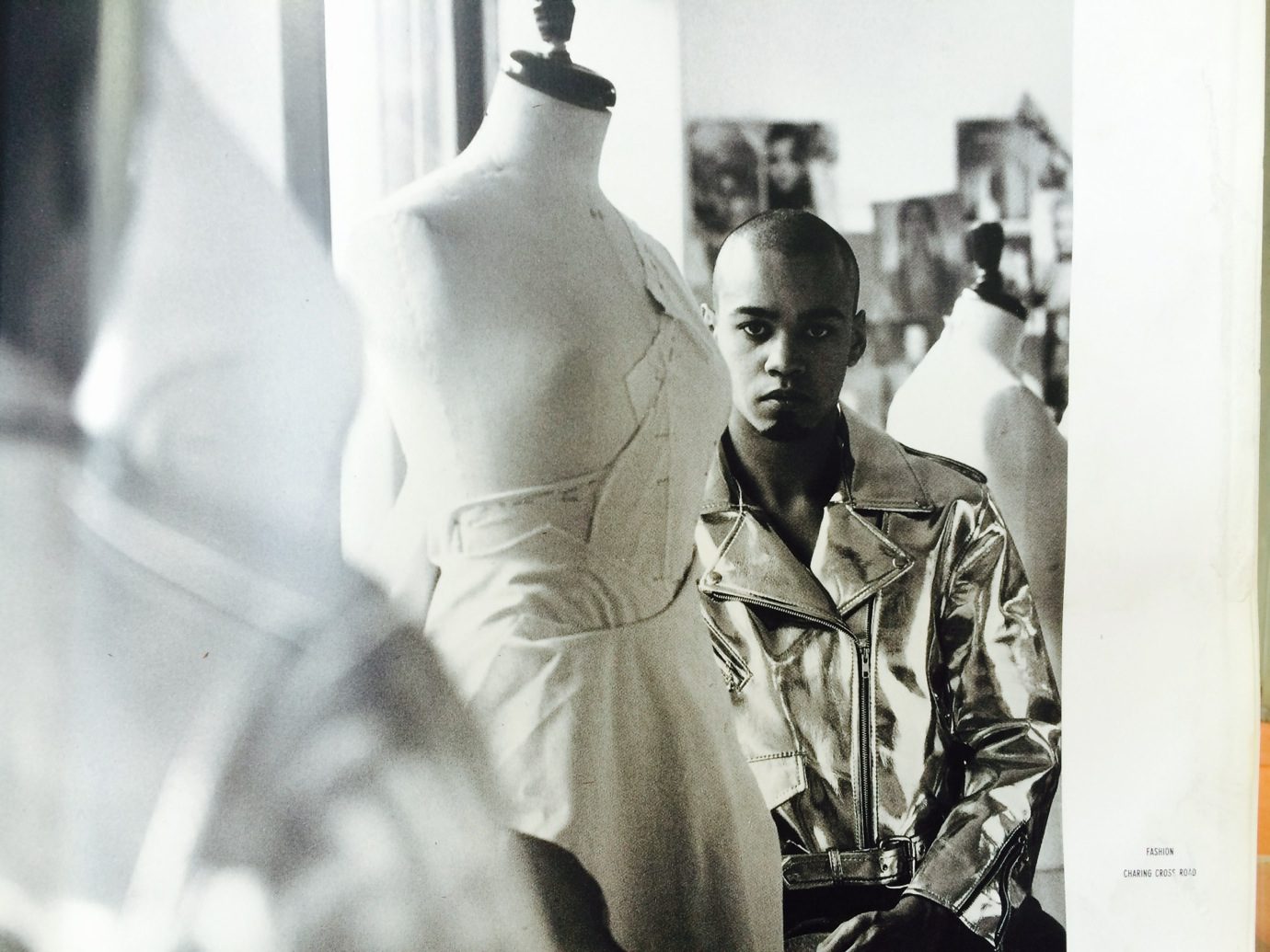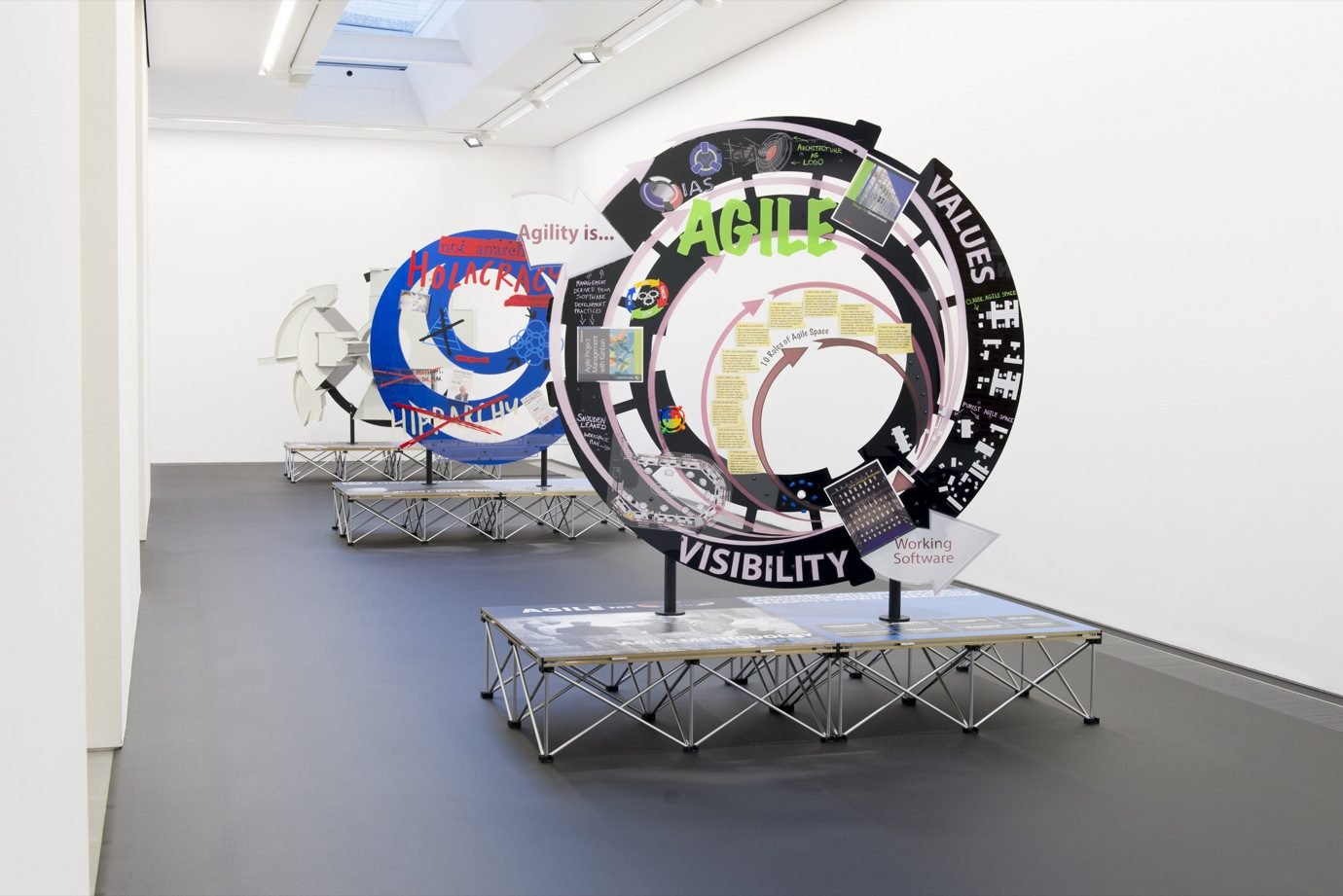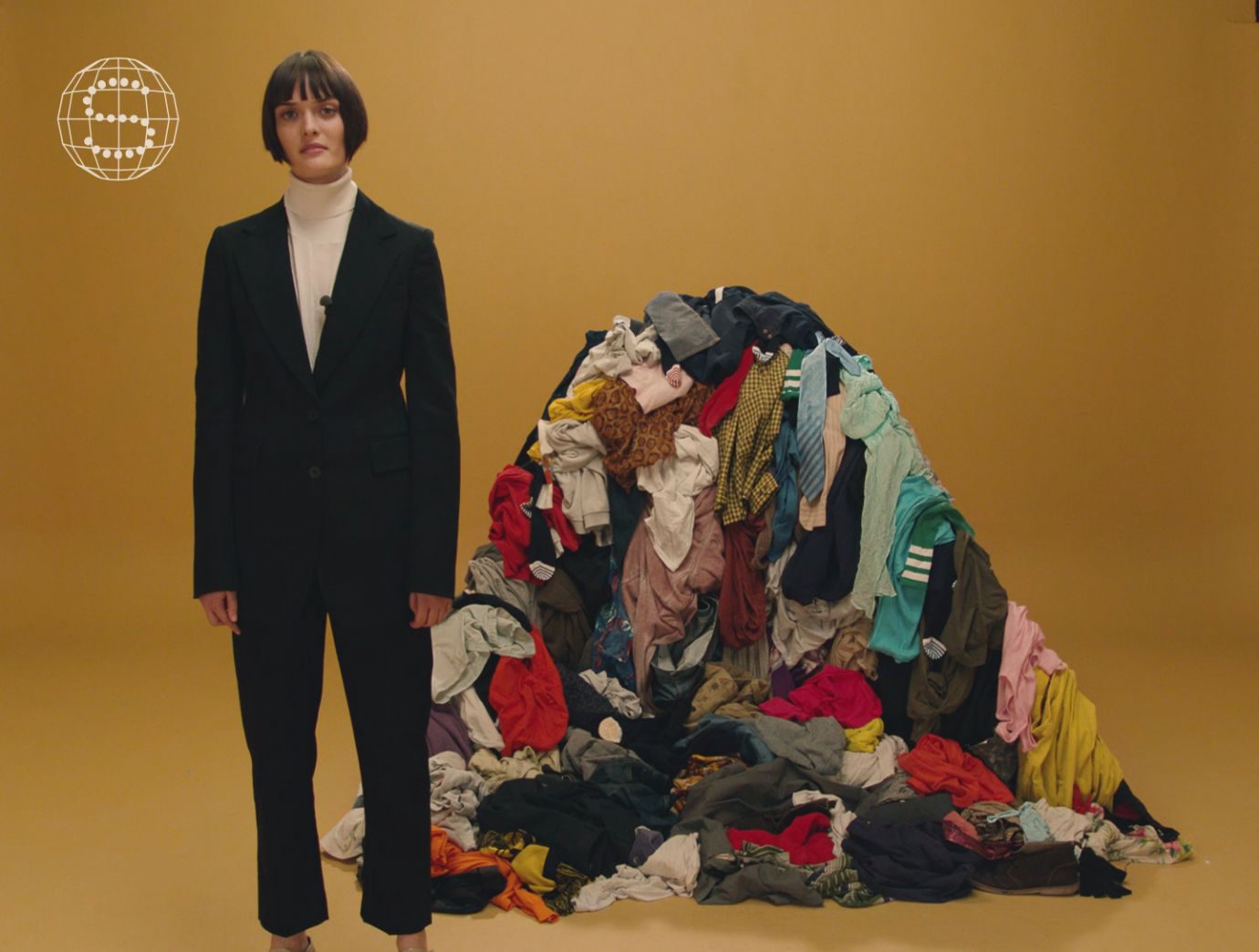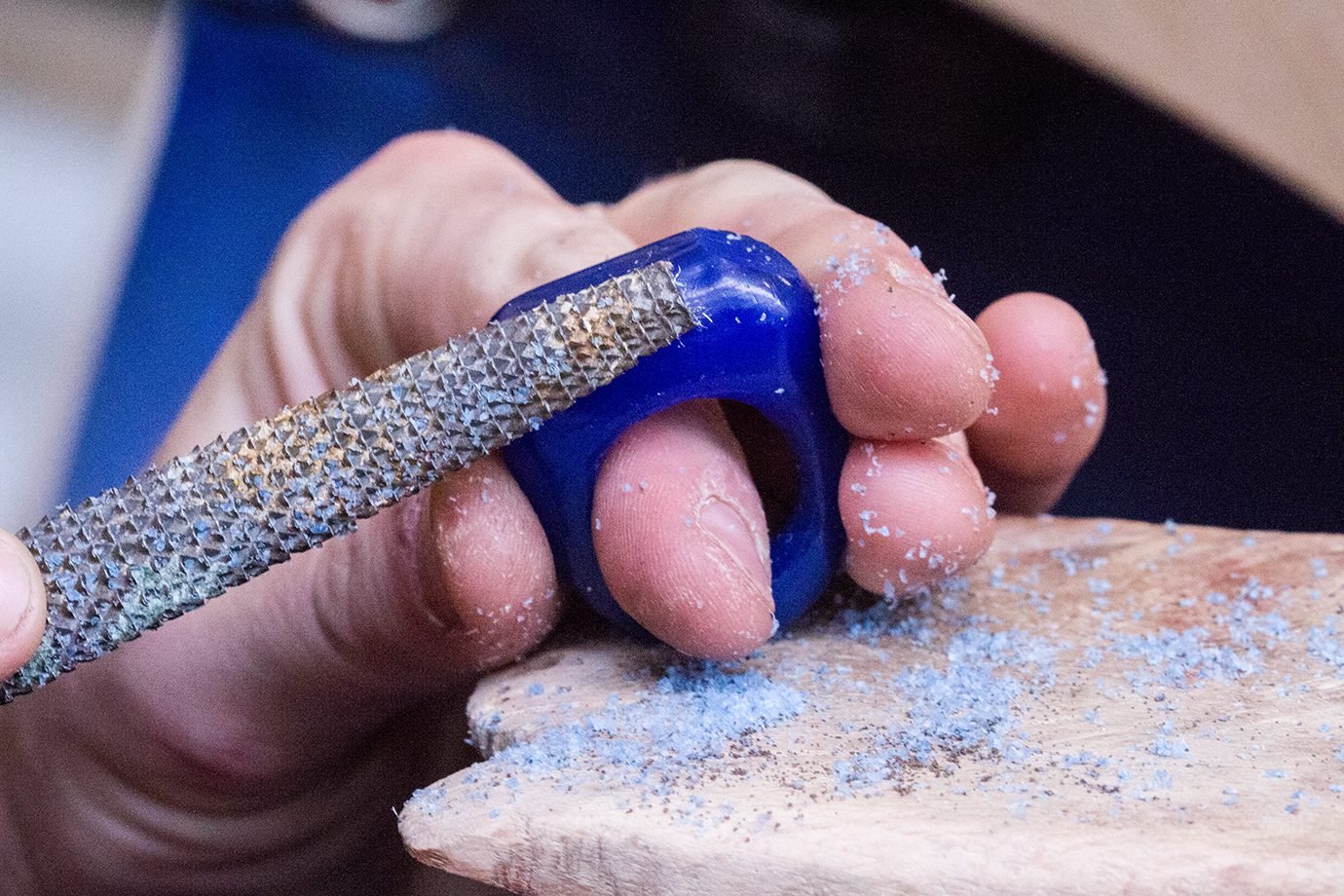We managed to hear some of the opinions of 3 judges just before the competition. Introducing Johan Arnø Kryer: Head of Responsible Innovation at the Danish Fashion Institute, Orsola de Castro: Fashion Designer, Co-founder of Estethica and Co-founder of Fashion Revolution and Raffaele Borriello, Creative Consigliere, Shanghai Tang.
It is true that design revolves around problem solving: in light of documentaries such as Andrew Morgan’s The True Cost, it is no great secret that both the fashion and textile industry’s environmental impact is a pretty big problem. This unsustainable aspect of the fashion cycle has become just as problematic for those at the forefront of the industry, with designers not being able to hack the speed at which clothing is demanded. The Ecochic Design Award is an international competition challenging participants to engage with such problem-solving, and create a collection with minimal textile waste. Here, we retrospectively reflect on the competition, speaking with some of the panel and CSM’s finalists.
Sara Kiani
Have you ever judged this competition before?
Johan Arnø Kryer: Yes! I had the privilege of judging the Nordic countries in 2014.
Orsola de Castro: This is my 5th year as a judge. I have been on duty since the very first Ecochic Design Award and I’m super proud to have followed it through and watch it grow.
Raffaele Borriello: This is my second time as international judge of The EcoChic Design Award.
Sustainability in fashion has become a hot topic in recent years. Why do you think that is?
Johan: There is a growing awareness within both the industry and consumers about the impact upon the environment, and the people who are working so hard to get cheap goods to the market fast. This is not unique, but part of a paradigm shift within our society. It is provoked by the fact that we slowly are running out of resources, and that we need to make a change in order to uphold the way of living that we know today. The UN estimates that we will be more than 9 billion people on the planet by 2050 and this puts pressure on all industries.
Orsola: Fashion is not intrinsically as stupid nor shallow as it has become in recent times. As our chosen skin, as a form of self expression, fashion lends itself to a political and social message. Sustainability, questioning the fashion industry status quo and innovating, are complex scenarios that require intelligence and intuition, as well as problem solving and curiosity: all perfect attributes for designers. Design is about finding solutions, in this case, to social and environmental challenges.
What is the most important step The Ecochic Design Award designers can take in ensuring an ethical collection?
Orsola: Thinking.
Johan: People will never buy fashion to save the world. We buy fashion to look and feel good, to signal how we are in a very individualized society. This is why I think it is very important not to mix sustainability and fashion, but treat them separately. Sustainability should just be a natural part of what we do while never compromising on aesthetics.
Raffaele: The first step is to start a collection with the idea of respecting our planet and giving a different approach. Choosing natural materials, a natural color process, recycled fabrics and having respect for the people who work in the production area. It’s state of mind and is absolutely vital in a creative contest.
Sara Kiani
Enthusiasm, passion and commitment is ever present in CSM finalists Sara Kiani and Annie Mackinnon, who unfortunately (and unjustly) didn’t win the competition. This has by no means dampened their fervour for a sustainable design practice, one which acknowledges the problems the fashion industry faces, whilst not sacrificing creative, considered craft.
Can you tell us about collection inspiration and also your fabric choices?
Sara: I just thought, what is there a lot of? Bed sheets are like a blank piece of paper, a blank slate, you can do whatever you want with them, so I utilised second-hand sheets. I asked a local hotel about sponsorship and they were really supportive, but it turns out that they rent their sheets from a laundry service, as most hotels apparently do! So, I got in contact with a laundry service right outside of London. Every morning, vans deliver fresh sheets to the hotels and collect all of the dirty linens. If there’s a tiny hole or stain they have to dispose of them, so those were the ones I was given. The service was actually great about sustainability: a lot of the sheets are donated to a monkey house, and others are made into cleaning supplies. I wanted the work to be modern, peaceful and pure, and I looked at the Victoria & Albert Museum’s Asian collection to see Chinese garments and their construction. I also looked at some traditional paintings, but I wanted to create more of a mood than a theme.
Annie: I really liked this painting by Henri Matisse of people lying around in a garden (Bonheur de Vivre, 1905), where it’s all bits stuck together, so I was trying to collage and print on textiles that were tacky or unwanted, to make them desirable again. I also took inspiration from Matisse’s cutouts and paintings by Karel Appel and Kandinsky: it was based on developing zero waste textile ideas that would use up all the scraps I created from cutting out the garment’s pattern pieces. I collaged, weaved and pleated these scraps; then printed and painted over them. This meant dragging around a bag full of tiny scraps of fabric for weeks. For the fabrics I used up-cycled synthetics from secondhand bedding and curtains, and wool that was purchased from a remnant fair on Berwick Street. In hindsight, it would have been better to use fabric that was actually ready to be landfill waste: I could have easily hidden tears or stains with my textile process, and just up-cycling old curtains and bedding isn’t really good enough, because they were still in good condition.
Why did you enter into the competition?
Sara: It was a bit of a coincidence. In the summer, I was doing my last internship in London during my placement year, and felt a bit disenchanted with the industry. So on my day off, I went to see Maria Nishio’s short course presentations: it was all about sustainable fashion ideas. There was this big group of girls of all ages, who were all so kind-spirited and forward-thinking that you couldn’t leave the room uninspired. After class everybody was exchanging ideas, thoughts, phone numbers etc. It was so cool to see people share creative solutions together and inspire each other. I got completely hooked by the vibe, and I heard about the competition. I looked it up with some doubt, ‘Eco’ projects never sound too appealing, do they? But I was amazed and totally impressed by the level of work and creativity, and I thought ‘I want to do that too!’
Annie: As for me, I wanted to learn more about sustainability and also wanted to visit Hong Kong!
Annie Mackinnon
Can you reflect on the experience of the competition and talk us through the process?
Sara: The application process was quite simple. I submitted three outfits (sketches) and explained my idea behind the collection. I put the most importance on the production process — my collection is 100% sustainable, local, and reproducible on a larger scale. I wanted to think of an alternative way of producing clothes. I was really intrigued by the idea of working together as a community; for local people to collaborate, and to use only local craftsmen and makers to produce the collection from disposals only within the city.
Annie: The competition has completely changed my views of sustainability. It had never even crossed my mind that for a factory to be energy efficient, the workers have to consistently be fast and efficient too, to get the maximum output for the hours the machines are switched on. A factory line production where each person will repeat the same task endlessly, sewing the same line all day, is actually the most efficient way to mass produce, and it is incredibly challenging mentally and physically for the employees. It’s definitely one of those things where if you think about it too much, you see so many paradoxes and other problems, so what the competition has really taught me, is that even if complete sustainability in fashion is basically impossible, it still makes a difference to do the best you can to be less wasteful.
What was the best (and worst) thing about the competition?
Sara: It was great to have the opportunity to bring your idea to life and to showcase it! However, it was rather a struggle considering that I am in my final year. To balance out my time wisely was not so sustainable [laughs].
Annie: The best part was getting to see Hong Kong and the life-changing ‘walk in rain shower’ we had in our hotel room. The worst part was having to make my collection at the same time as doing all my other uni projects.
Do you think that ideas around sustainability should be better integrated into design studies?
Sara: How garments are produced, who produces them, where the materials got sourced, under which conditions they are made… If this process becomes better integrated into design studies, it would be a much more powerful gesture than people simply stating “oh, we have to be sustainable these days.” You have to be aware how your things are made and where they come from, in order to have an opinion about it.
Annie: There are so many different aspects involved in sustainable design, that it is a very daunting task to learn about it by yourself. I know there are a few sustainability projects within the fashion pathways, but they usually just consist of upcycling unwanted designer fabrics, when the reality is that there is so much more involved.
How would you define sustainability beyond its immediate association with the environment? And what do you think about recent developments with designers not being able to sustain the pace of fashion?
Sara: I don’t believe you have to separate things too much: environmental and social issues go hand in hand. The damages being done to the environment are a clear reflection of the fashion industry. Everything from the design process in the studios to big production factories: it all goes so fast that nobody or nothing can keep up. It’s just not natural to produce with that speed. It’s not a sustainable way of working, because in the end you break down, as we have experienced the past year with designers stepping back and factories collapsing, for example. You can’t separate the two things. It is all a cycle, and all the aspects of the industry affect each other.
The industry needs someone with a powerful name to step back and admit that the system is messed up. Things needs to flow organically: you can’t shit out ideas, that’s not how creativity works. You need time and space to find inspiration. Then to develop your inspiration into something wearable, which people tend to forget, is actually rather challenging. It’s not organic or human to do all that in 2 minutes. In order for something to sustain and grow, you have to go with sensible speed. If you constantly work unrealistically, it will backfire and do more harm than good. It doesn’t matter if that is for someone who works in an office, a store or a studio: if you overwork yourself, you’ll perform poorly on all levels.
Annie: There are so many little steps, from design to production, transport and consumption. At every step, choices need to be made to ensure as little waste and pollution as possible is created.
Hopefully it will mean that alternatives to the seasonal system will develop. It’s ridiculous to force out that many seasons a year, which inevitably means that past designs become obsolete at an extremely fast pace. Collections become less memorable and creatively interesting, because everyone is so rushed. It would be a lot better if brands came out with a collection whenever they felt like they were ready to do it, not because they are obliged to fit into the schedule of fashion week. It’s so easy to get a collection out online without even having the fuss of putting on a show. It seems like fashion is very self-loathing at the moment, which is sad, because the focus is on the negative impact fashion has on people and the environment rather than creativity, so hopefully this will eventually change!

